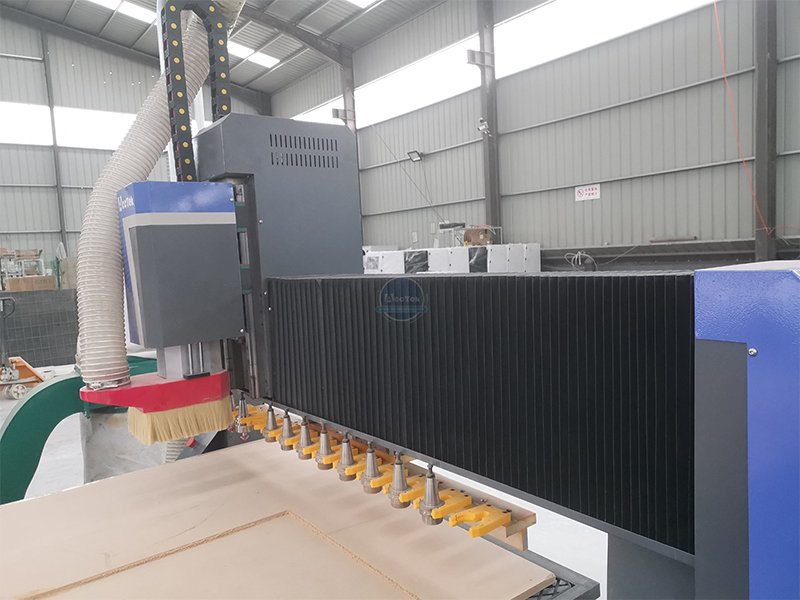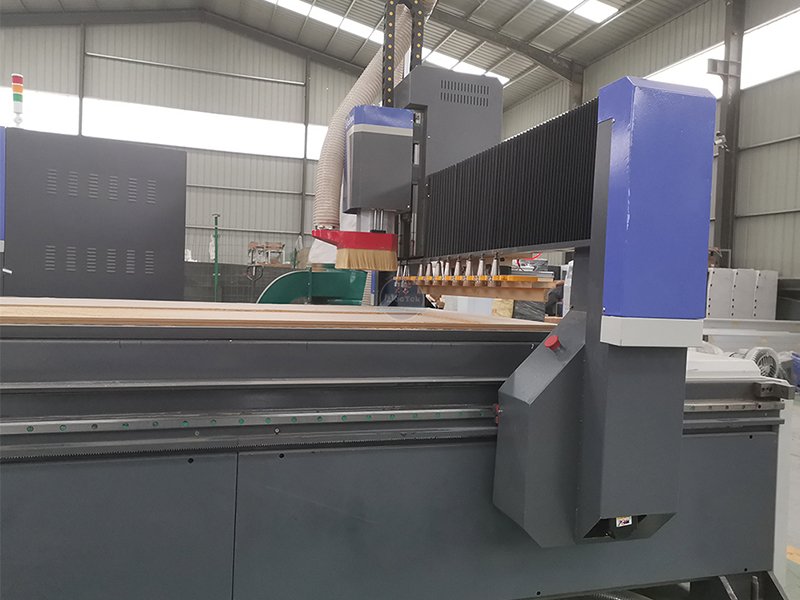CNC routers can maintain a higher level of manufacturing, CNC routers can maintain strict tolerance and extreme consistency.
1. Improve productivity
CNC routers don't rest, don't go out for lunch, never get sick, and don't need to sleep.The only time they need to be off duty is for regular preventive maintenance.This provides higher productivity, which is another factor keeping prices down.
2. Consistency
CNC router machines can maintain a higher level of manufacturing consistency than human operators.The machine is never tired, distracted or in a bad mood.This helps to improve the quality of parts production and reduce waste.This is also valuable in situations where tight dimensional tolerances need to be maintained.
3. Agility
CNC machine tools accept design changes quickly and easily, allowing engineering teams to update parts and designs without having to modify expensive tools.This agility also allows the machine to quickly switch from one component to another without having to spend time setting up tools.
4. Lower labor costs
As the machine works independently, it does not require a skilled mechanic to operate it.A less skilled person could actually supervise several machines, further reducing labor costs.
5. Adaptability to complex design
One of the hardest things to deal with is complex curves.However, for a CNC router, it's just another day in the office. In fact, CNC routers are often the only way to accurately and consistently curve around a composite curve (bending on two different axes at the same time).Even with these complex designs, CNC routers can still maintain tight tolerances and extreme consistency.
6. Reduce the scrap rate
Because parts can be machined continuously on a CNC router, there is little wasted material in the spare parts.In many cases, white space is not needed because parts can be continuously cut directly from the bar stock. In addition, the consistency of the manufacturing process actually eliminates parts that are scrapped because they do not pass quality assurance inspections.
Many people do not know how to choose the
CNC machine tool stepping motor, the following is the choice of CNC machine tool stepping motor four points to note.
1. Choose to maintain torque
Torque retention, also known as static torque, refers to the stepper motor power without rotation, rotor torque locked state.Since the low-speed torque of the stepping motor is close to the holding torque, the torque and fast attenuation of the stepping motor also decrease with the increase of the speed, and the output power also increases with the increase of the speed. Therefore, keeping measuring the stepping motor torque is one of the most important parameters affecting the load capacity.For example, stepper motors without 1Nm are generally understood to maintain a torque of 1m
2. Selection number
Two-phase stepper motor has low cost, at least 1.8 degrees away from the Angle, large vibration at low speed, and fast reducing torque at high speed, suitable for high speed, accuracy and stability requirements are not high environment;The three-phase stepping motor has a stepping Angle of at least 1.2 degrees, and its vibration is less than that of a two-phase stepping motor. Its performance is better than that of a two-phase stepping motor at low speed. The highest speed is more than 30% higher than that of a two-phase stepping motor, which is suitable for high speed, high precision and high stability stepping motor.Three-phase stepper motor five-phase stepper motor has small stepping Angle, good low speed performance, but high cost, suitable for low speed segment, high accuracy and stability requirements.
3. C-hook stepper motor
It should follow the principle of selecting first, then driving the motor, and defining the load characteristics. Then, by comparing the static torque and torque frequency curves of different types of stepping motors, the stepping motor matching the load characteristics should be found out with high accuracy. Mechanical reducer should be adopted to make the motor work in the state of highest efficiency and lowest noise.If it must be resolved by changing the voltage, current, or increasing the damping, it must be resolved by changing the voltage, current, or increasing the damping;Under the power supply voltage, it is recommended to use DC 24V and 36V for the motor. The 57,86 motor USES DC46V and the 110 motor USES higher than DC80V.The number of motor mounts selected for large rotational inertia loads is large.Large inertial load, high speed work, the motor and frequency should gradually increase the speed, in order to prevent the motor disjointed, reduce
4, Select drive and fine fraction
Step by step do not choose the optimal state, because the entire vibration state;Select low current, large inductance and low voltage drive as far as possible;Higher working current than the driver. When low vibration or high precision subdivision drive is needed, the high voltage large-torque motor can achieve good high-speed performance.In order to save cost, it is not necessary to select the high-precision subdivision drive when the motor speed is usually high and the precision and stability are not required.The actual motor speed condition is usually very low, so a larger subdivision should be selected to ensure smooth operation and reduce vibration and noise.In conclusion, when selecting subdivision, the actual running speed of the motor, the range of load torque, the setting of the reducer, and the requirements for precision, vibration and noise should be considered.
Hope you can choose the most suitable stepper motor.



